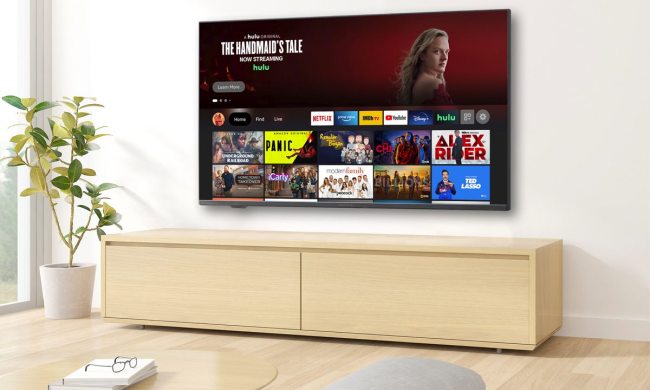
There are plenty of stylish, tech-heavy speakers doing the rounds in 2021, but not too many are quite like the speaker designed and built by Dakd Jung. A 40-year-old artist living in Ansan, South Korea, Jung has created an unusual speaker that harnesses the power of ferrofluid, a viscous magnetic oil invented by a NASA scientist in the early 1960s, to amazing effect.
Ferrofluid inventor Steve Papell imagined that the innovative substance — made of nanoscale ferromagnetic particles suspended in a carrier fluid — could be harnessed as a magnetized rocket fuel that would be easier to draw into a rocket’s engine in the absence of gravity. It has never been used this way, however. Engineers accomplished much the same goal using elastic sump tanks and aerosol propellants.
Instead, while ferrofluid has gone on to be used in genuine engineering applications (it’s utilized in computer hard drive rotary seals and as a contrast agent for MRIs), it has most notably gained a public second wind as a material used by artists to create otherworldly projects. With its strange, quivering spikes and gloopy, black appearance, ferrofluid looks about as close as the world will likely get to a real-life version of Marvel’s Venom symbiote.
Moving to the music
In the case of Jung’s speaker, he uses it — in conjunction with an electromagnet — to conjure up a speaker display that moves around in time to the music being played on it. Imagine the aliens from Arrival living it large at a rave and you won’t be too far off.
Jung told Digital Trends that he became interested in ferrofluid in 2015 when he bought a small ferrofluidic bottle toy from Amazon. “Its physical properties were really amazing,” he said. “I think it [struck me] because it was unfamiliar for a fluid, not a solid, to react to magnetism. Fluid mechanics is very beautiful.”
Jung calls himself an installation artist interested in kinetic and new media art. But he also studied and worked as an electrician and electronic engineer. His work, therefore, bridges what English novelist C.P. Snow once called “The Two Cultures,” with science and the humanities firmly seated in opposite camps. It’s an interesting blend of art and science.
Since finding out about ferrofluid, Jung has used it in multiple pieces of art — including an impressive ferrofluid “Pataphysical Pond,” in which the ferrofluid spreads out like a live oil spill or an ever-shifting Rorschach test. The idea for the speaker came to him when he was listening to music while playing with a ferrofluid display cell he had built. Absentmindedly, he manually began timing the electromagnetic pulses to match the music he was hearing.
“It was like dancing,” he said. “It looked fun.”
Coming soon to a living room near you?
The 3D-printed speaker shell boasts a suitably 1960s retro-futuristic space age aesthetic that could comfortably fit among the props in a movie like 2001: A Space Odyssey. Its look was inspired, Jung said, by the work of German industrial designer Dieter Rams and the Japanese graphic designer Kenya Hara. “I like very simple things,” he noted. “I [wanted] to avoid the ‘LED show’ [look], which is often seen on other Bluetooth speakers.”

Inside the speaker shell are triple upward-firing speaker drivers, a Bluetooth module for connecting with an audio source, and a compact amplifier. There’s also a glass bottle containing the ferrofluid, some LEDs for illuminating it, and a mounted electromagnet, controlled via Arduino Nano, which coaxes the ferrofluid into reacting to the music played.
“The biggest problem with ferrofluid is that it is easy to stain the glass bottle,” he said. “To fix it, you need to keep the glass chemically very clean. It is then possible to make the glass surface superhydrophilic through a special coating. In addition, ferrofluid must be made not to oxidize for a long time because the main ingredient is oil.”
After he completed his initial prototype, Jung decided to share his speaker with the world. This, in turn, inspired his possible future plans to bring it to market. “I started making it for fun, but after posting it on my social media, [people were telling me to] ‘shut up and take my money,’” he said.
As a result, he’s now considering ways to develop the concept further, with an eye on eventually manufacturing a model he can sell. “We are trying to combine with various speaker types,” Jung explained. “We plan to create a device that can be used by connecting to a high-fidelity speaker rather than a Bluetooth speaker.”
Whatever form it ultimately takes, who wouldn’t want one of these? This is pretty much the definition of a party piece in every sense of the word.


